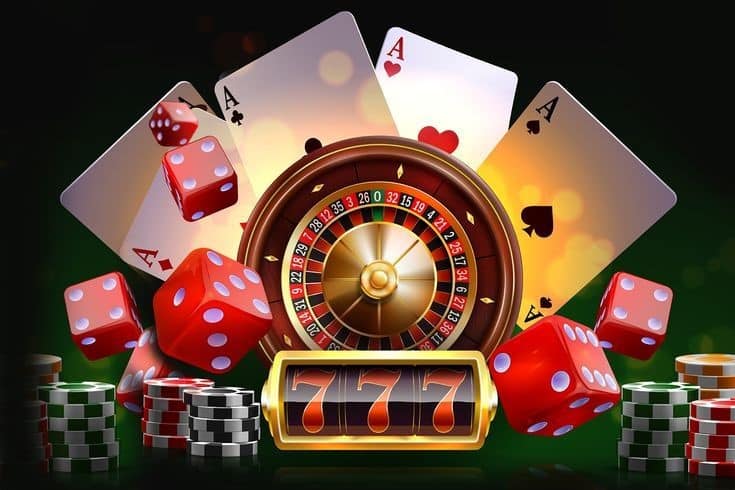Gambling games have captivated players throughout history, transforming from basic recreational activities to complex experiences that blend fortune, tactics, and amusement. From the historical origins of gambling in societies including Mesopotamia and Rome to the extravagant corridors of modern casinos, the journey of these games shows much about the human experience and our interaction with risk. As cultures blended and technology has advanced, casino games have changed, mirroring shifts in society and innovations in gameplay.
The primitive versions of gambling likely included simple dice-based games and betting on the outcomes of athletic contests. Through the years, these primitive activities grew into more structured games like playing card games, the game of roulette, and the multitude slot machines that populate the premises of casinos today. Each era brought its distinct regulations, visual styles, and sociocultural significance. At present, casino games maintain their evolution with the rise of digital gaming platforms, enabling players from all corners of the globe to engage in a common experience, further blending the traditional with the modern era.
Ancient Roots of Casino Activities
Casino games have origins that stretch back to old civilizations, where betting was deeply embedded in social practices and social customs. The initial known instances of gambling appeared in Mesopotamia around three thousand BC, including simple die games made from bone material. These primitive games laid the basis for more advanced betting games, showing human beings’ innate urge to find wealth and amusement through luck.
As civilizations developed, so did their betting interests. In early Chinese culture, around two thousand three hundred BC, objects were discovered that looked like early basic forms of a lottery activity. More structured forms of betting developed in the ancient Roman civilization, where games of chance were a common pastime, often taking place in social gatherings. The Romans developed different betting activities, which entailed die and table activities, highlighting the pervasive nature of betting across various social strata.
With the movement of time, these early activities shaped the evolution of modern gambling games. In the medieval period, card games grew prevalent in European culture, paving the way for the organized gaming venues we know today. The shift from casual betting to organized gaming in taverns and private houses marked a significant change in how people interacted with games of chance, leading to the eventual establishment of gaming houses as specialized places for gambling.
The Growth of Contemporary Gambling Industry
The final 1960s and 1970s marked a crucial shift in the world of gaming, fueled by tech innovations and transformations in cultural attitudes towards gambling. The introduction of computers and the internet revolutionized the way gamblers interacted with their preferred gaming experiences. Virtual casinos emerged, allowing players to enjoy traditional table games like poker and 21 from the convenience of their houses. This new online environment not only broadened access to casino games but also attracted a fresh audience who found the comfort and variety tempting.
As digital gambling gained traction, so did advancements in gaming technology. The advancement of advanced programs and visual elements transformed traditional gambling games into immersive experiences. Players could now interact with live live dealers through live streaming, bringing the atmosphere of physical casinos directly into their houses. This fusion of live gaming with digital interfaces created a new hybrid model that elevated the community element of playing, making it possible for individuals to engage and compete with fellow gamers around the globe.
Additionally, the growth of gaming on mobile devices dramatically changed the gambling environment. With the ubiquitous use of smartphones and touch devices, players can enjoy their beloved casino games everywhere, at any time. Mobile apps offer a vast array of games tailored for mobile screens, catering to the fast-paced daily life of modern users. This availability has resulted in growing participation in gambling, fostering the exponential growth of the gambling sector. As a result, the future of casino gaming continues to evolve, responding to technological advancements and shifting player expectations.
The Impact of Technology on Casino Games
Technology’s advancement has greatly changed casino games, improving the overall gaming experience for players around the world. As the internet emerged, online casinos were created, allowing players to play their preferred games from the comfort of their homes. This shift not only made casino games more available but also expanded the variety of games available, as online platforms could host numerous variations of traditional games without the physical constraints of brick-and-mortar establishments.

The rise of mobile technology further revolutionized the casino gaming landscape. With the proliferation, players can to engage in casino games whenever and wherever they want. This flexibility has led to the creation of dedicated mobile applications and optimized websites that provide seamless gaming experiences. Additionally, advancements such as live dealer games have delivered the genuine feel of a casino into players’ homes, bridging the gap between physical and online gaming.
Moreover, advancements in AI and virtual reality are leading to the next generation of casino games. AI enhances game design and player interaction, creating customized experiences based on user behavior and preferences. lu88 Meanwhile, virtual reality offers immersive environments where players can interact in a simulated casino setting, making the gaming experience more exciting and lifelike. As technology continues to evolve, the future of casino games looks promising, filled with endless possibilities for innovation and entertainment.